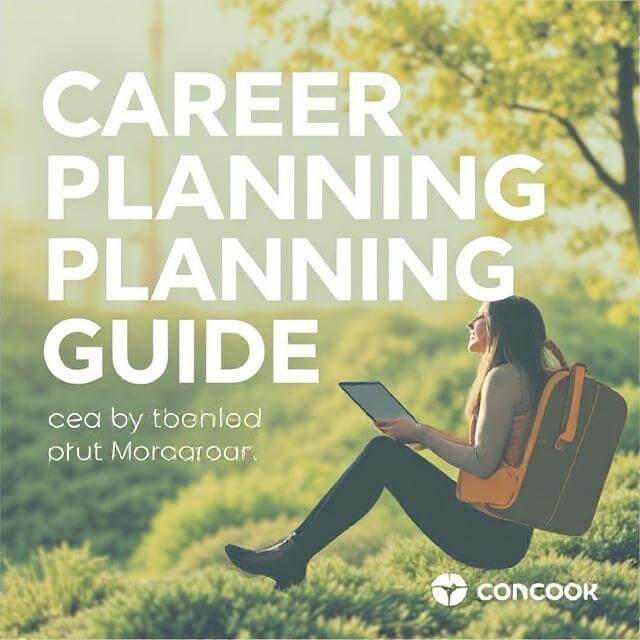🧭 Career Planning Guide: Set Your Path to Success
Introduction: Why Career Planning Matters
In today’s dynamic world, where industries evolve rapidly and new professions emerge regularly, having a well-thought-out career plan is more crucial than ever. Whether you’re a student contemplating your future, a professional seeking growth, or someone considering a career shift, strategic planning can be your roadmap to success.
At SufficientNotes.com, we believe that with the right guidance and resources, anyone can navigate their career path effectively. This comprehensive guide will walk you through the essential steps of career planning, helping you make informed decisions and achieve your professional goals.
1. Understanding Career Planning
Career planning is a continuous process of:
- Self-assessment: Identifying your interests, strengths, values, and aspirations.
- Goal setting: Defining short-term and long-term career objectives.
- Strategic action: Developing a plan to acquire the necessary skills and experiences.
- Evaluation and adjustment: Regularly reviewing and refining your career path.
This proactive approach ensures that you’re not just reacting to opportunities but actively creating them.
2. Self-Assessment: Know Yourself
Before charting a career path, it’s vital to understand who you are.
a. Identify Your Interests and Passions
Reflect on activities that energize you. Consider:
- Subjects or topics you enjoy learning about.
- Tasks you look forward to.
- Hobbies that captivate your attention.
b. Evaluate Your Strengths and Skills
Assess both your hard and soft skills:
- Hard skills: Technical abilities like coding, writing, or data analysis.
- Soft skills: Interpersonal abilities like communication, leadership, or problem-solving.
c. Determine Your Values and Motivations
Understand what matters most to you in a job:
- Work-life balance
- Financial security
- Opportunities for advancement
- Making a positive impact
Tools like the SWOT Analysis (Strengths, Weaknesses, Opportunities, Threats) can be beneficial in this phase.

3. Exploring Career Options
With a clearer understanding of yourself, research potential career paths that align with your profile.
a. Research Industries and Roles
Utilize resources like:
- SufficientNotes.com for industry insights and career guides.
- Professional networking platforms to connect with individuals in roles of interest.
- Job portals to explore current openings and required qualifications.
b. Consider Future Trends
Stay informed about emerging fields and declining industries. For instance:
- Growing sectors: Renewable energy, artificial intelligence, digital marketing.
- Declining sectors: Traditional print media, certain manufacturing roles.
Understanding market trends ensures long-term career viability.
4. Setting SMART Career Goals
Effective goals are:
- Specific: Clearly defined.
- Measurable: Quantifiable outcomes.
- Achievable: Realistic given your resources.
- Relevant: Aligned with your broader objectives.
- Time-bound: Set within a clear timeframe.
Example: “Obtain a certification in digital marketing within six months to qualify for entry-level roles in the field.”
5. Skill Development and Education
Identify gaps between your current skills and those required for your desired role.
a. Formal Education
Consider:
- Degree programs
- Certifications
- Workshops and seminars
b. Online Learning Platforms
Leverage platforms like:
- Coursera
- Udemy
- LinkedIn Learning
These resources offer flexibility and a wide range of courses to enhance your skill set.
6. Gaining Practical Experience
Hands-on experience is invaluable.
a. Internships and Volunteering
These opportunities allow you to:
- Apply theoretical knowledge.
- Build a professional network.
- Gain insights into workplace dynamics.
b. Freelance Projects
Taking on freelance work can:
- Enhance your portfolio.
- Provide real-world challenges.
- Offer flexibility in exploring different roles.
7. Networking and Mentorship
Building relationships can open doors to opportunities and guidance.
a. Attend Industry Events
Participate in:
- Conferences
- Workshops
- Webinars
b. Seek Mentors
A mentor can:
- Provide career advice.
- Share experiences.
- Offer constructive feedback.
Platforms like LinkedIn can be instrumental in connecting with potential mentors.
8. Crafting a Professional Resume and Online Presence
Your resume and online profiles are often the first impressions you make.
a. Resume Tips
- Tailor your resume for each application.
- Highlight relevant experiences and achievements.
- Keep it concise and error-free.
b. Online Profiles
Ensure your LinkedIn and other professional profiles:
- Reflect your current skills and experiences.
- Include a professional photo.
- Showcase endorsements and recommendations.
9. Preparing for Job Applications and Interviews
a. Job Applications
- Customize cover letters for each role.
- Follow application instructions meticulously.
b. Interview Preparation
- Research the company and role.
- Practice common interview questions.
- Prepare questions to ask the interviewer.
Confidence and preparation are key to successful interviews.
10. Continuous Evaluation and Adaptation
The career planning process is ongoing.
- Regularly review your goals and progress.
- Stay updated with industry trends.
- Be open to adjusting your plan as needed.
Flexibility ensures resilience in the face of change.
Conclusion: Take Charge of Your Career Journey
Embarking on a career planning journey empowers you to take control of your professional future. By understanding yourself, exploring options, setting clear goals, and continuously adapting, you position yourself for success.
At SufficientNotes.com, we’re committed to supporting you every step of the way. Explore our resources, stay informed, and take proactive steps toward your career aspirations.
Ready to start your career planning journey? Visit SufficientNotes.com for more insights, tools, and guidance tailored to your professional growth.






